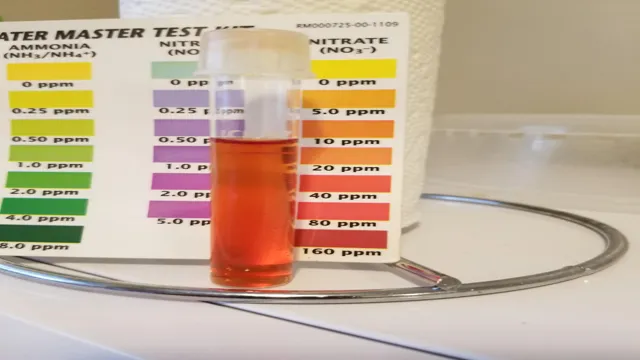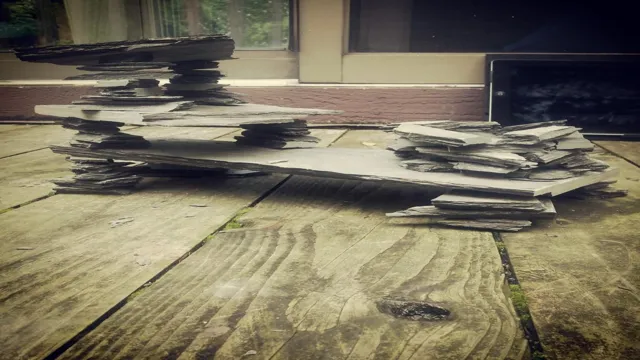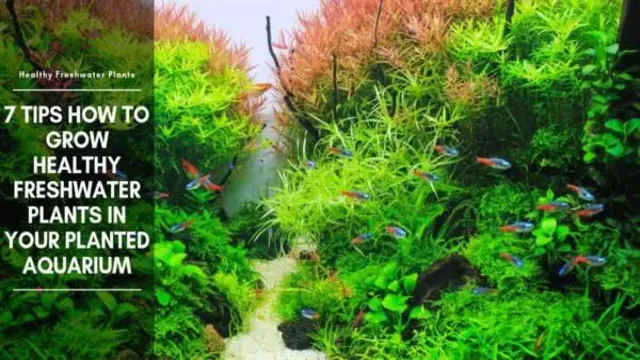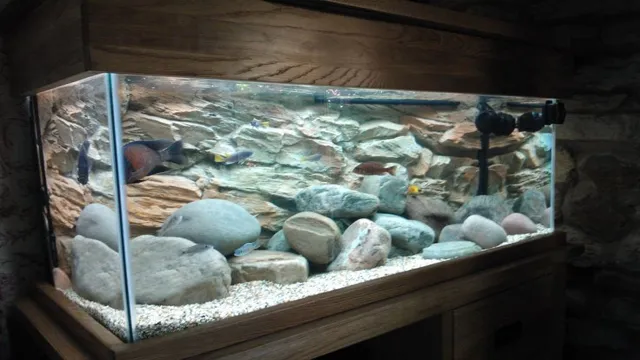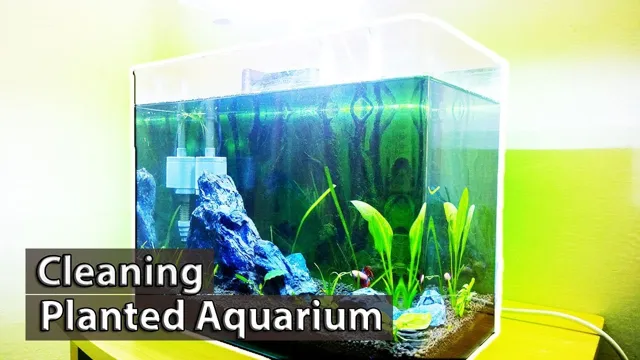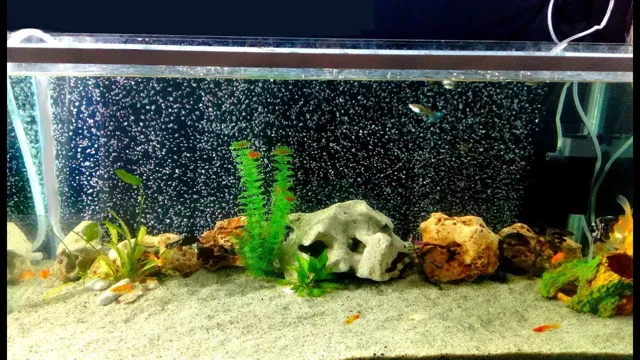How to Maintain an Aquarium without a Filter: A Beginner’s Guide
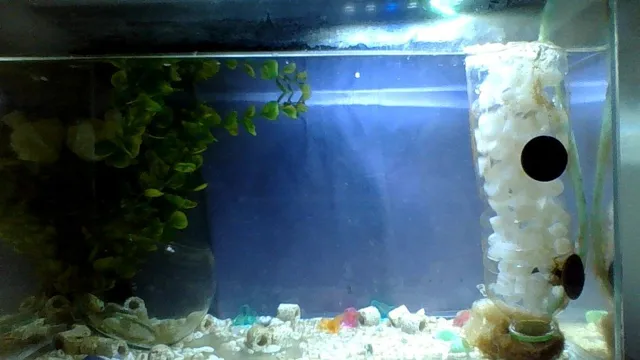
If you are a beginner aquarist or simply don’t want to deal with the maintenance of a filter, it is possible to maintain an aquarium without it. Although a filter is an essential tool in keeping water clean and balanced, there are alternative methods to ensure a healthy environment for your fish and aquatic plants. In this blog post, we’ll explore the various ways of maintaining an aquarium without a filter and discuss the pros and cons of each method.
While a filter is convenient, it can also be noisy, bulky, and expensive. On top of that, it requires regular cleaning and replacement of filter media to keep the beneficial bacteria colonies intact. However, with a bit of effort and creativity, you can achieve a healthy and thriving aquarium using natural methods, such as plants, water changes, and beneficial bacteria supplements.
The key to maintaining an aquarium without a filter is to establish a natural balance within the ecosystem. This means incorporating live plants, which help to absorb excess nutrients and produce oxygen, and beneficial bacteria, which break down harmful waste products. By adding hardy fish and invertebrates that produce minimal waste, you can reduce the need for a filter and create a self-sustaining environment.
Of course, maintaining an aquarium without a filter requires more effort and attention to detail than with one. You’ll need to monitor water parameters regularly, perform frequent partial water changes, and keep a watchful eye on your fish and plants. It may also take longer for the natural processes to establish and balance the ecosystem, but once they do, you’ll be rewarded with a healthy and thriving aquarium that doesn’t require a filter.
Why Consider a Filter-less Aquarium?
Maintaining an aquarium without a filter may seem unorthodox, but it is possible and can even be beneficial in certain cases. One of the main advantages of a filter-less aquarium is its simplicity. Without a filter, there are no complicated mechanisms to maintain or replace regularly.
Instead, the aquarium relies on a balance of live plants and a small number of fish to maintain the ecosystem. This creates a more natural and sustainable environment for the fish to thrive in, and reduces the overall cost of maintaining the aquarium. However, it’s essential to note that a filter-less aquarium requires careful monitoring of the water quality, and regular water changes must be done to keep the environment stable.
It’s also critical to ensure the tank is not overstocked with fish as this can lead to an imbalance of the ecosystem and poor water quality. Overall, maintaining a filter-less aquarium can be a rewarding and unique experience for any aquarium enthusiast, but it does require close attention to detail and proper care.
Benefits of a Filter-less Aquarium
If you’re an aquarium enthusiast, you might want to consider a filter-less aquarium. Why? Let’s explore the benefits. Firstly, filter systems can be quite expensive to install and maintain, so going filter-less can save you some money.
Secondly, a filter-less aquarium can be more aesthetically pleasing as there are no mechanical parts to obstruct the view. Thirdly, a filter-less aquarium can be quieter since there is no noise from the pump. Additionally, without a filter, you will be forced to have a low fish density, which can lead to less maintenance and less chance of disease.
However, it’s important to note that a filter-less aquarium requires proper fish care, as waste can accumulate quickly and harm the fish. So, consider your options and consult with a professional before making the switch.
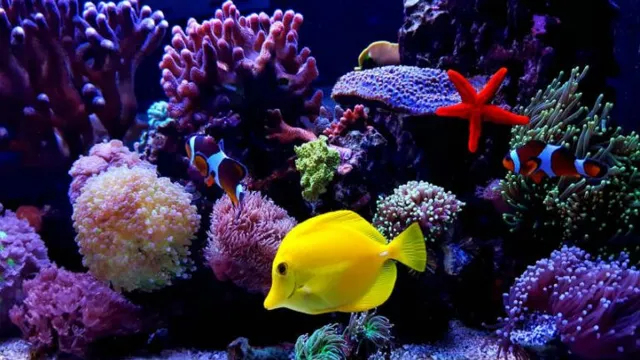
Types of Fish That Can Thrive in a Filter-less Aquarium
If you’re interested in setting up an aquarium but don’t want to go through the hassle of maintaining a filter, a filter-less aquarium might be the way to go. These tanks rely on natural methods to keep the water clean and healthy for fish, and as such, can be home to a variety of fish species. While not all fish are suitable for filter-less environments, there are many that can thrive without filtration.
Some popular choices include bettas, guppies, and neons, as well as various types of shrimp and snails. Keep in mind that maintaining a filter-less aquarium requires careful attention to feeding and water changes, as well as frequent monitoring of water parameters to ensure a safe and healthy environment for your fish. However, with a little extra effort, a filter-less aquarium can be a rewarding and low-maintenance way to enjoy the beauty of aquatic life in your own home.
Maintaining a Filter-less Aquarium
Maintaining an aquarium without a filter can be challenging but it’s definitely doable. To keep your aquarium clean and healthy, you will need to take a different approach to how you maintain it. One solution is to add live plants to the tank.
Plants can act as natural filters, helping to absorb toxins and waste from the water. Another option is to do frequent water changes. You’ll need to replace about 10-20% of the water every week to prevent any build-up of waste and debris in the tank.
You can also add beneficial bacteria to help break down any organic waste in the water. Additionally, make sure you don’t overfeed your fish as uneaten food can contribute to waste build-up. Regularly testing the water quality will also help you adjust your maintenance routine as needed.
With these strategies in place, you can successfully maintain an aquarium without a filter, giving your fish a healthy and thriving environment to call home. (See Also: How to Make a Big Glass Aquarium: A Step-by-Step Guide to Creating Your Dream Fish Tank)
Performing Regular Water Changes
Maintaining a filter-less aquarium may seem daunting, but it is possible with regular water changes. Without a filter, the aquarium relies on the owner to manually remove excess waste and debris from the tank. This can be done by using a siphon or gravel vacuum to clean the substrate and removing any uneaten food or dead plants.
However, even with regular cleaning, the water quality can still degrade over time. This is where water changes come in. By performing routine water changes, you can remove harmful toxins and refresh the water supply, promoting a healthy environment for your aquatic pets.
Aim to change 10-20% of the water every week or every other week, using a water conditioner to neutralize any chlorine or chloramine in the tap water. By keeping up with water changes, you can maintain a thriving filter-less aquarium for years to come.
Using Live Plants for Natural Filtration
Maintaining a filter-less aquarium can be challenging but it is definitely doable. One way to achieve this is by using live plants for natural filtration. Live plants not only provide aesthetic value but also offer a variety of benefits to your aquatic pets.
They absorb excess nutrients such as nitrates, which if not removed, can be harmful to fish and other inhabitants of the aquarium. Additionally, live plants produce oxygen and consume carbon dioxide, pumping clean air into the water. This results in a healthier environment for your aquatic pets, and reduces the need for a mechanical filter.
However, it is important to note that maintaining live plants requires regular pruning, nutrients, and adequate lighting conditions. It may take some experimentation to find the right combination for your particular aquarium, but incorporating live plants into your aquarium is a natural way to promote a healthy ecosystem.
Feeding Your Fish Only What They Can Consume
When it comes to feeding your fish, it’s important to remember that they only need the amount that they can consume within a few minutes. Overfeeding can lead to uneaten food settling at the bottom of the tank, causing harm to the overall ecosystem. In addition to keeping a watchful eye on your fish’s eating habits, it’s important to regularly clean up any excess food or debris in the tank to ensure your fish’s health and well-being.
Another way to maintain a healthy aquarium is by creating a filter-less environment. While this may seem counterintuitive, it can actually lead to a more natural and balanced ecosystem. Without a filter, the tank will rely on its natural biological processes to maintain the water quality, which can ultimately lead to healthier and happier fish.
By incorporating these practices into your fish care routine, you can create a thriving and sustainable aquarium that provides your fish with a healthy and comfortable home.
Choosing the Right Tank Size
Maintaining an aquarium without a filter can be tricky, but it’s definitely doable if you choose the right tank size. You need to find a tank that is large enough to accommodate your aquatic pets while being small enough to manage easily. A good rule of thumb is to have one gallon of water for every inch of fish, but this can vary depending on the species.
It’s also important to consider the amount of waste your fish produce and how often you’ll need to clean the tank. In general, smaller tanks will require more frequent maintenance, so you may want to opt for a larger tank if you want to avoid constant cleaning. Overall, choosing the right tank size is essential for maintaining an aquarium without a filter and keeping your fish healthy and happy.
Calculating the Ideal Tank Size for Your Fish
Choosing the right tank size is crucial for keeping your fish healthy and happy. When it comes to selecting the ideal tank size, several factors need to be considered. First, you need to determine how many fish you plan to keep and their size.
As a general rule, you should have one gallon of water per inch of fish. So, if you have a 10-inch fish, you need a minimum of 10 gallons of water. However, it’s always better to go bigger than required, as a larger tank provides more space for your fish to swim and reduces the need for frequent water changes.
Additionally, you need to consider the type of fish you plan to keep and their behavior. Some fish are active and need more space to swim, while others prefer tight spaces. Lastly, consider your budget, available space, and level of experience.
All these factors will help you determine the right tank size for your fish. Remember, a well-planned and adequately sized tank can provide a healthy and stimulating environment for your fish. (See Also: How to Put Dirt in an Aquarium: A Comprehensive Guide for a Healthy Aquatic Environment)
Tips for Providing Adequate Space in a Filter-less Aquarium
When it comes to providing adequate space in a filter-less aquarium, choosing the right tank size is crucial. A larger tank size means more water volume, which leads to better dilution of waste and more oxygen for your fish. It also allows for more swimming space and reduces stress on your aquatic pets.
Therefore, before setting up your aquarium, consider the number and size of fish you plan to keep and choose a tank size that will accommodate them comfortably. Don’t forget to also factor in the size of any decorations or plants you plan to add, as these will take up space too. By choosing a well-sized tank for your fish, you’re ensuring a happy and healthy environment for them to thrive in.
Important Considerations
Maintaining an aquarium without a filter may sound like a daunting task, but it can be done with certain considerations in mind. First, it is important to ensure that the tank is properly cleaned and the water is changed on a regular basis. This can be done through manual siphoning or using a gravel vacuum to remove debris and waste from the substrate.
Additionally, incorporating live plants can help improve water quality by naturally filtering out toxins and excess nutrients. It’s also important to monitor the amount of food being fed to the fish to prevent overfeeding and excess waste. Finally, adding a sponge filter or air stone can provide some surface agitation and help oxygenate the water.
With these steps in place, it is possible to maintain a healthy and thriving aquarium without the use of a filter.
Monitoring Water Quality
One of the most important considerations in monitoring water quality is choosing the appropriate method for measurement. There are different methods available depending on what exactly you want to measure and the location of the water body. For instance, if you want to look at the presence of contaminants, you can conduct chemical tests or use biosensors.
Physical tests can be employed to determine water clarity, temperature, and oxygen levels. However, it’s not enough to simply measure parameters in isolation. It’s important to consider the interplay between different physical and chemical parameters, how they change over time and the potential effects on aquatic life.
In addition, using appropriate quality control measures and referencing international standards can help ensure accuracy and reliability of data. By taking these factors into consideration, it’s possible to monitor water quality effectively and make well-informed decisions to help protect aquatic ecosystems and human health.
Removing Waste and Debris
When it comes to removing waste and debris, there are several important considerations to keep in mind. First and foremost, it’s crucial to ensure that all waste is disposed of safely and in compliance with local regulations. This means properly sorting and disposing of hazardous materials, such as chemicals or medical waste, as well as ensuring that recyclable materials are separated from non-recyclable ones.
Additionally, it’s important to consider the environmental impact of waste removal, and to minimize the amount of waste produced wherever possible. This may involve implementing more sustainable practices, such as composting or using reusable packaging materials. By taking these important considerations into account, we can work towards creating a cleaner, healthier, and more sustainable world.
The keyword “waste removal” has been used naturally throughout the paragraph.
Preventing Overcrowding and Overfeeding
When it comes to keeping a healthy and happy aquarium, preventing overcrowding and overfeeding are two important considerations. Overcrowding can lead to stress and illness among fish, while overfeeding can not only contribute to overcrowding but also lead to water quality issues. One way to prevent overcrowding is to research the specific needs and behaviors of each fish species before adding them to your aquarium.
This can help ensure that each fish has enough space to swim and thrive. As for overfeeding, it’s important to only feed your fish what they can consume in a few minutes and to avoid feeding them multiple times a day. Additionally, using a variety of food types and offering occasional fasting periods can help promote a healthy diet.
By taking these steps, you can help create a thriving, balanced ecosystem in your aquarium. (See Also: How to Make Aquarium Drawing: Step-by-Step Guide for Beginners)
Considering a Backup Plan in Case of Emergencies
When it comes to emergencies, it’s always best to be prepared. This means having a backup plan in place in case of unexpected events such as natural disasters, power outages, or even a computer crash. One key consideration is ensuring that important data and documents are backed up regularly and stored in a secure location.
This can be done through cloud storage, external hard drives or even physical copies kept in a safety deposit box. Another important factor to consider is communication. In an emergency situation, it’s crucial to have a way to stay in touch with family members, coworkers, and emergency services.
This could mean having a designated meeting place, emergency phone numbers saved in your phone, or even a two-way radio. By taking the time to plan for emergencies, you can better protect yourself and your loved ones in potentially dangerous situations.
Conclusion
In conclusion, maintaining an aquarium without a filter might seem like a daunting task, but it can be done with proper care and attention. Think of your aquarium as a delicate ecosystem and make sure you are providing your fish with the right conditions to thrive. Regular water changes, a healthy stock of plants and surface agitation will help keep your tank clean and healthy.
And who knows, without the hum of a filter, you might even be able to hear the fish whispering witty remarks to each other.”
FAQs
Is it possible to maintain an aquarium without a filter?
Yes, it is possible to maintain an aquarium without a filter by using live plants, frequent water changes, and proper feeding habits.
How often should I change the water in my aquarium without a filter?
You should change the water in your aquarium without a filter at least once a week, and ideally 20-30% of the water volume.
Can I use a sponge filter in my aquarium instead of a regular filter?
Yes, a sponge filter can be used in an aquarium as a substitute for a regular filter. It provides biological and mechanical filtration.
What types of live plants are best for maintaining an aquarium without a filter?
Some good live plants for maintaining an aquarium without a filter are java moss, anubias, and marimo moss balls. They help with natural filtration and oxygenation.
How often should I clean the substrate in my aquarium without a filter?
You should clean the substrate in your aquarium without a filter once a month, using a siphon to remove debris and waste.
What types of fish are best suited for an aquarium without a filter?
Small, low waste-producing fish such as bettas, guppies, and neon tetras are best suited for an aquarium without a filter.
Can I use chemicals such as ammonia absorbers in an aquarium without a filter?
Yes, you can use ammonia absorbers in an aquarium without a filter to help maintain water quality and eliminate harmful toxins. However, frequent water changes are still necessary.

